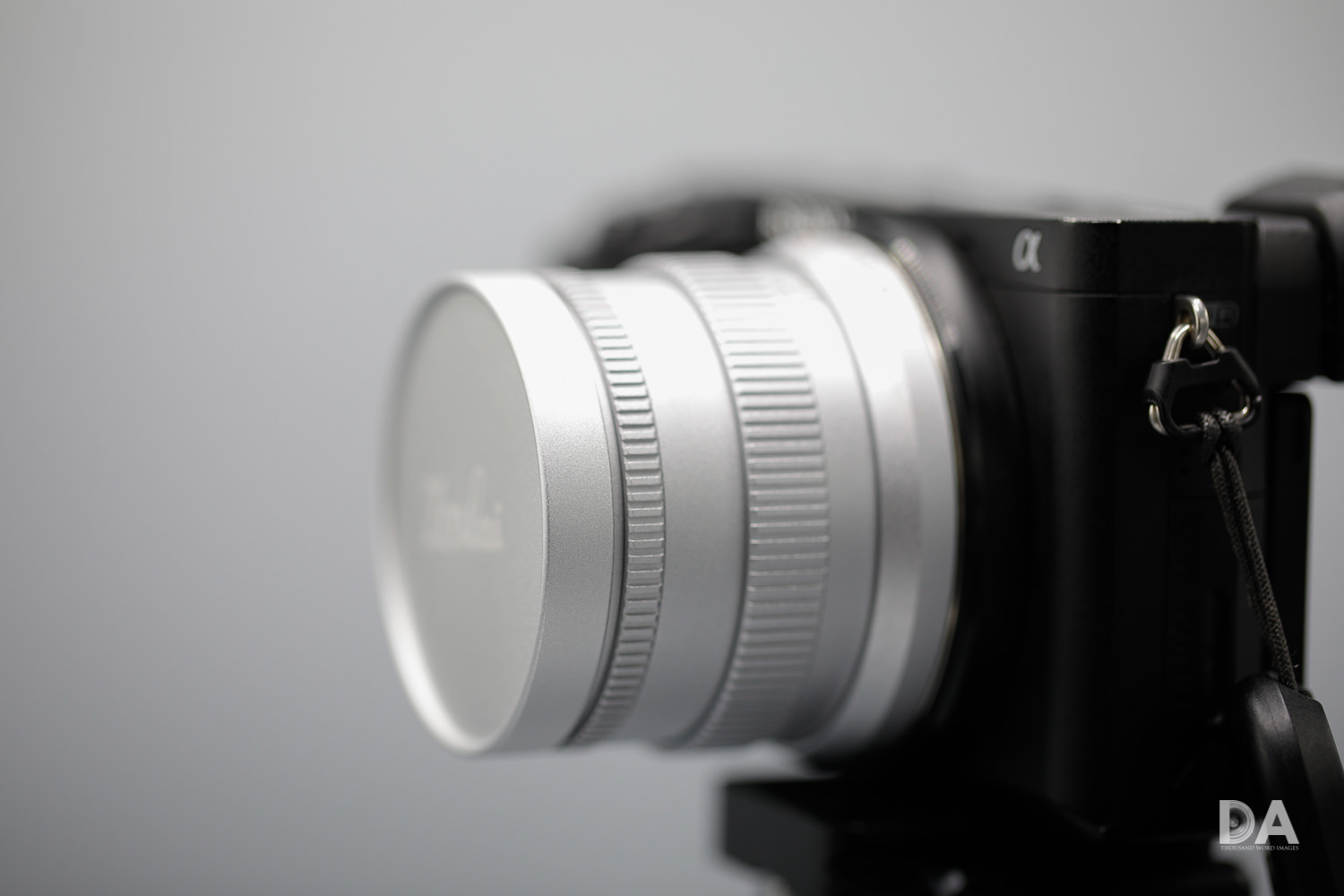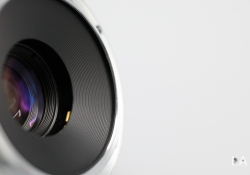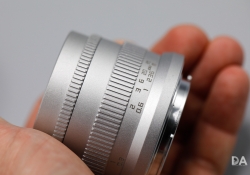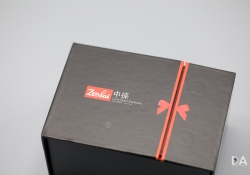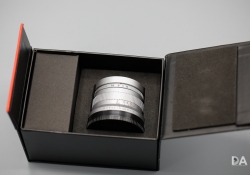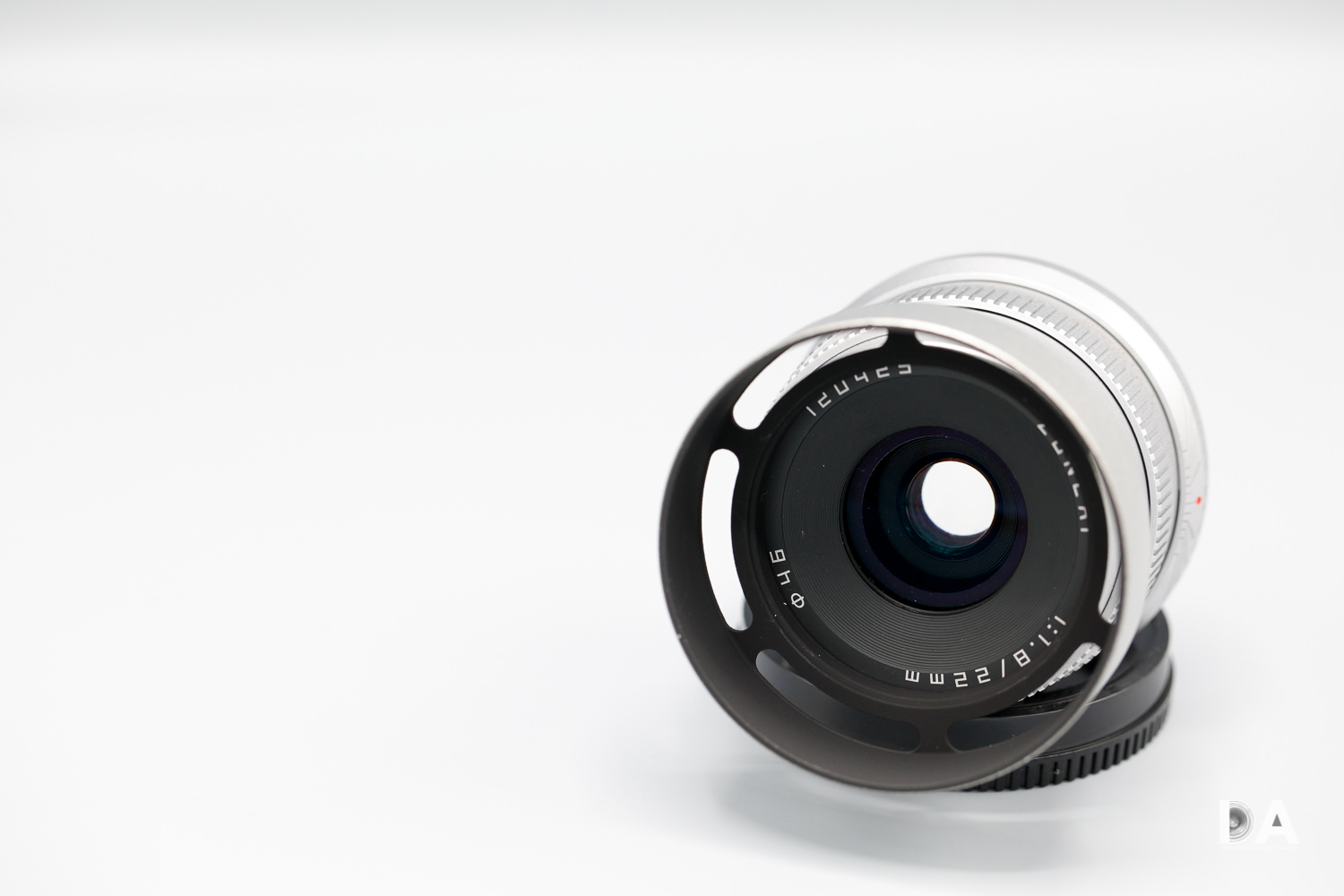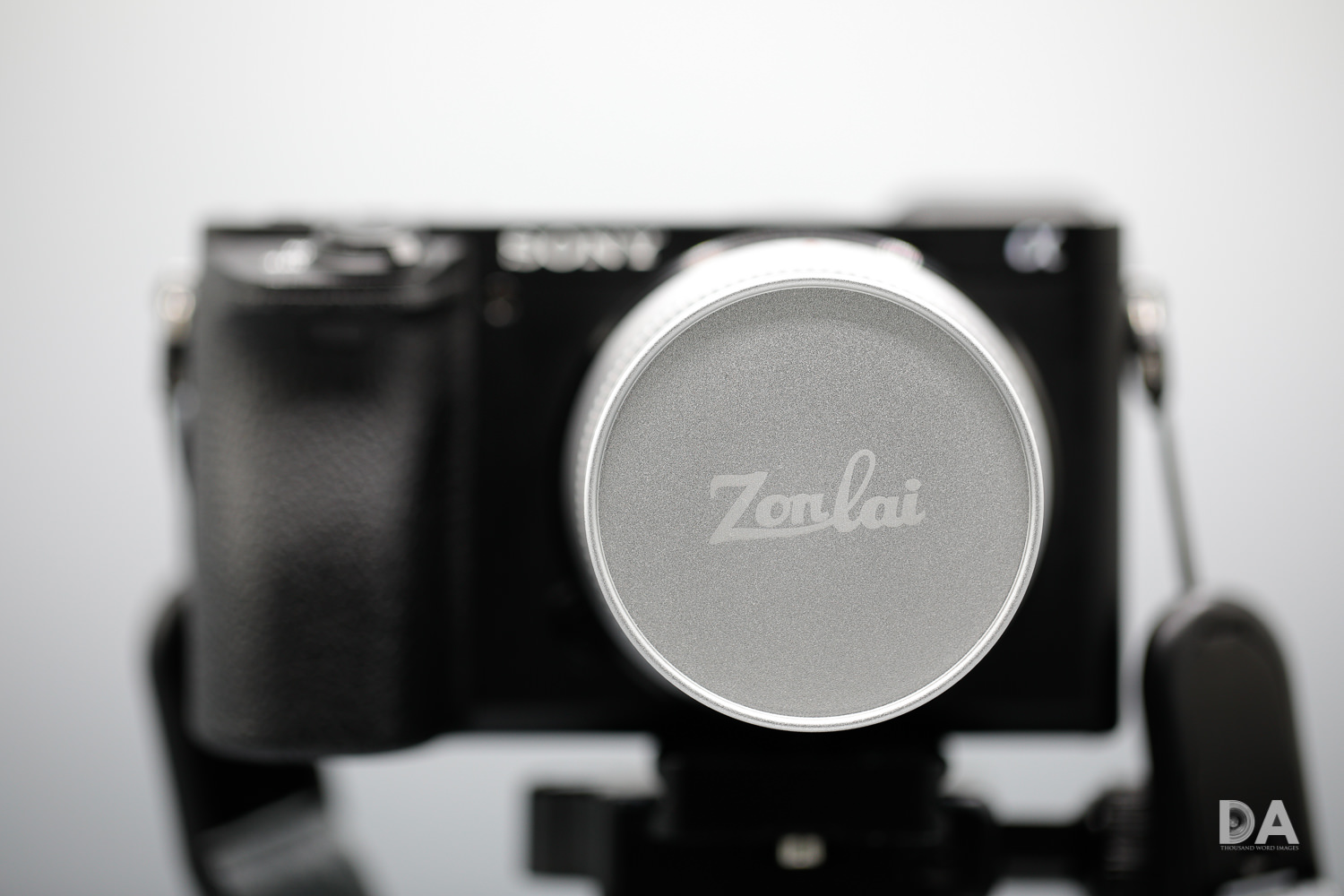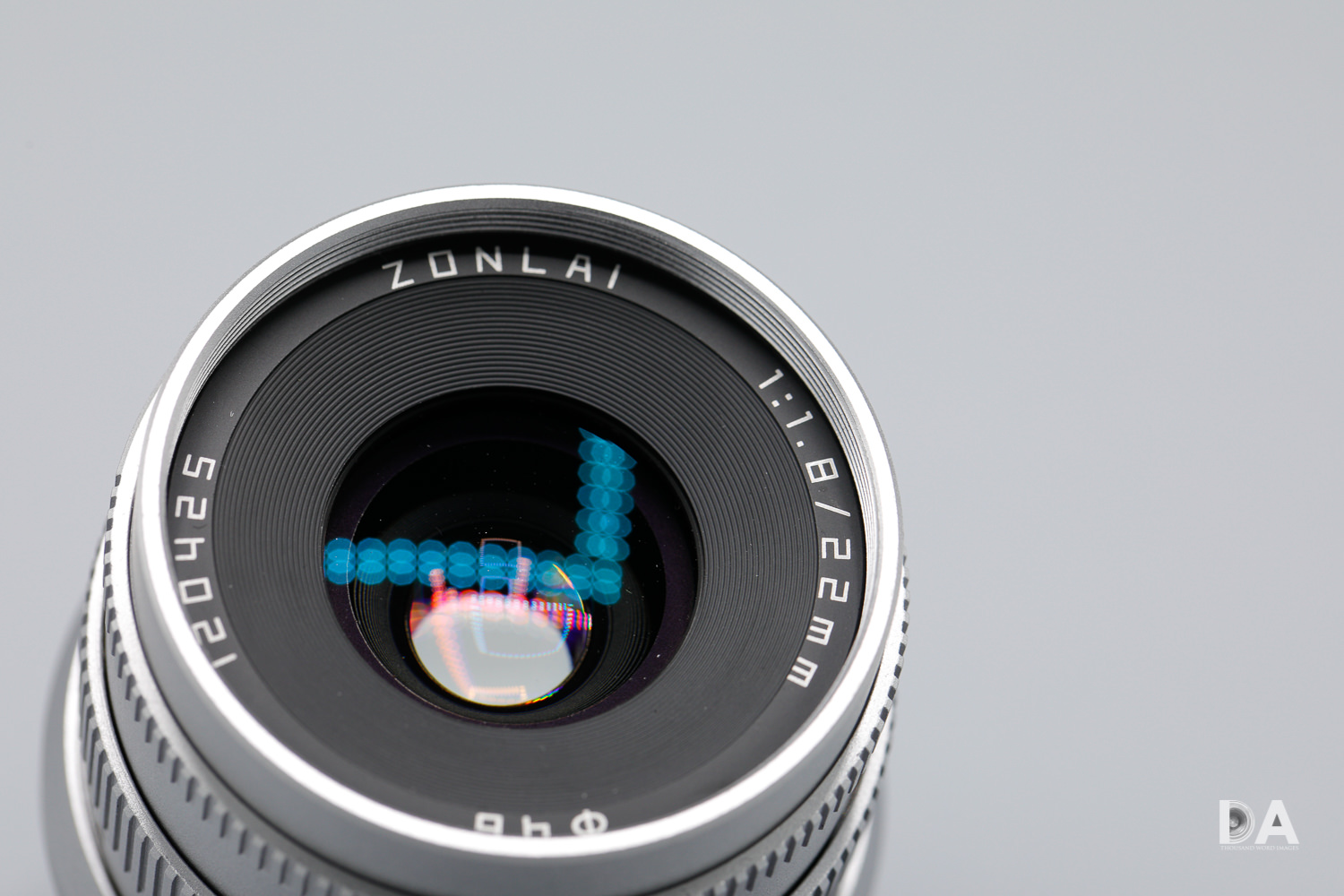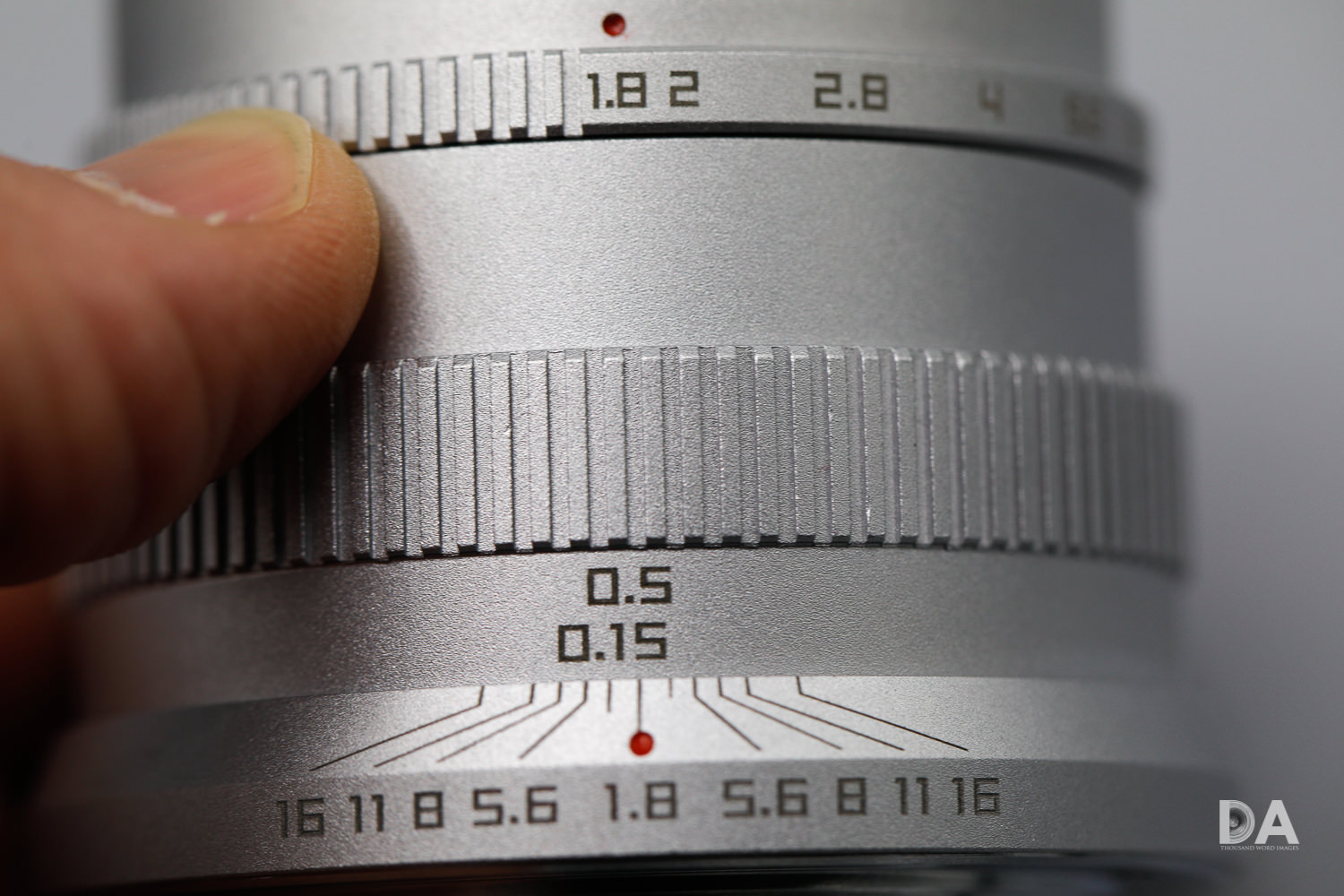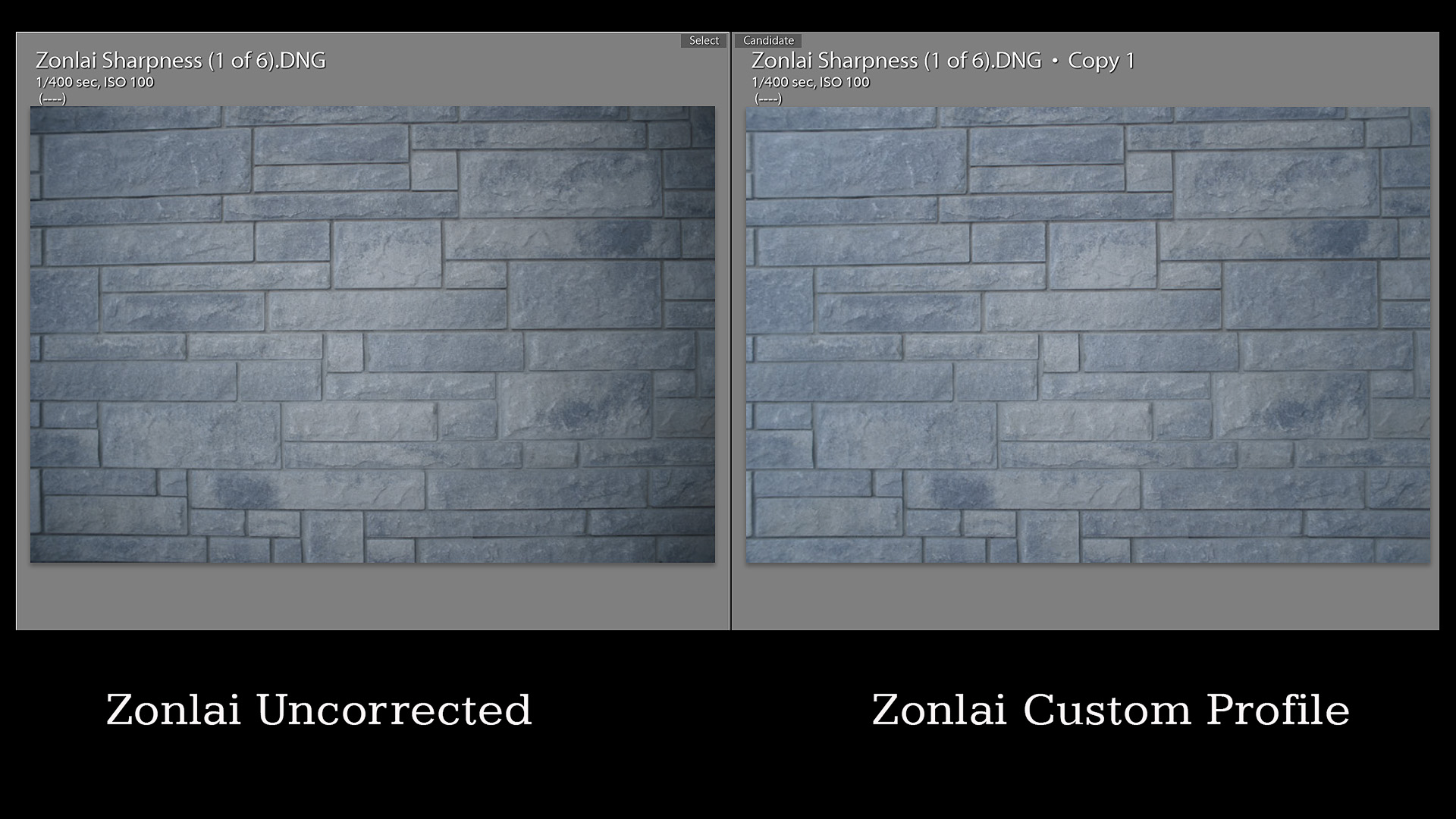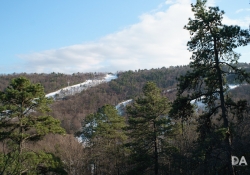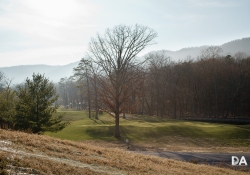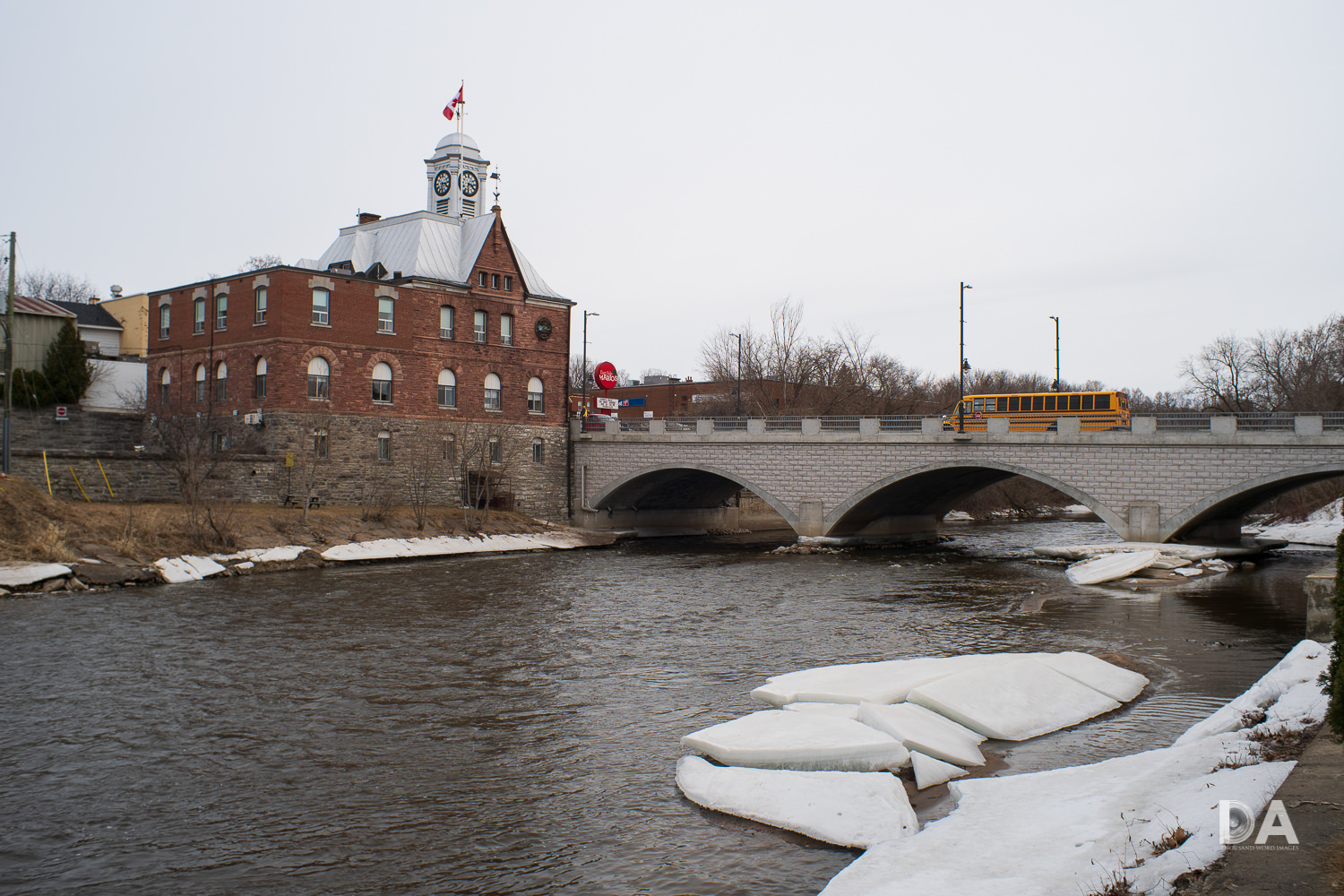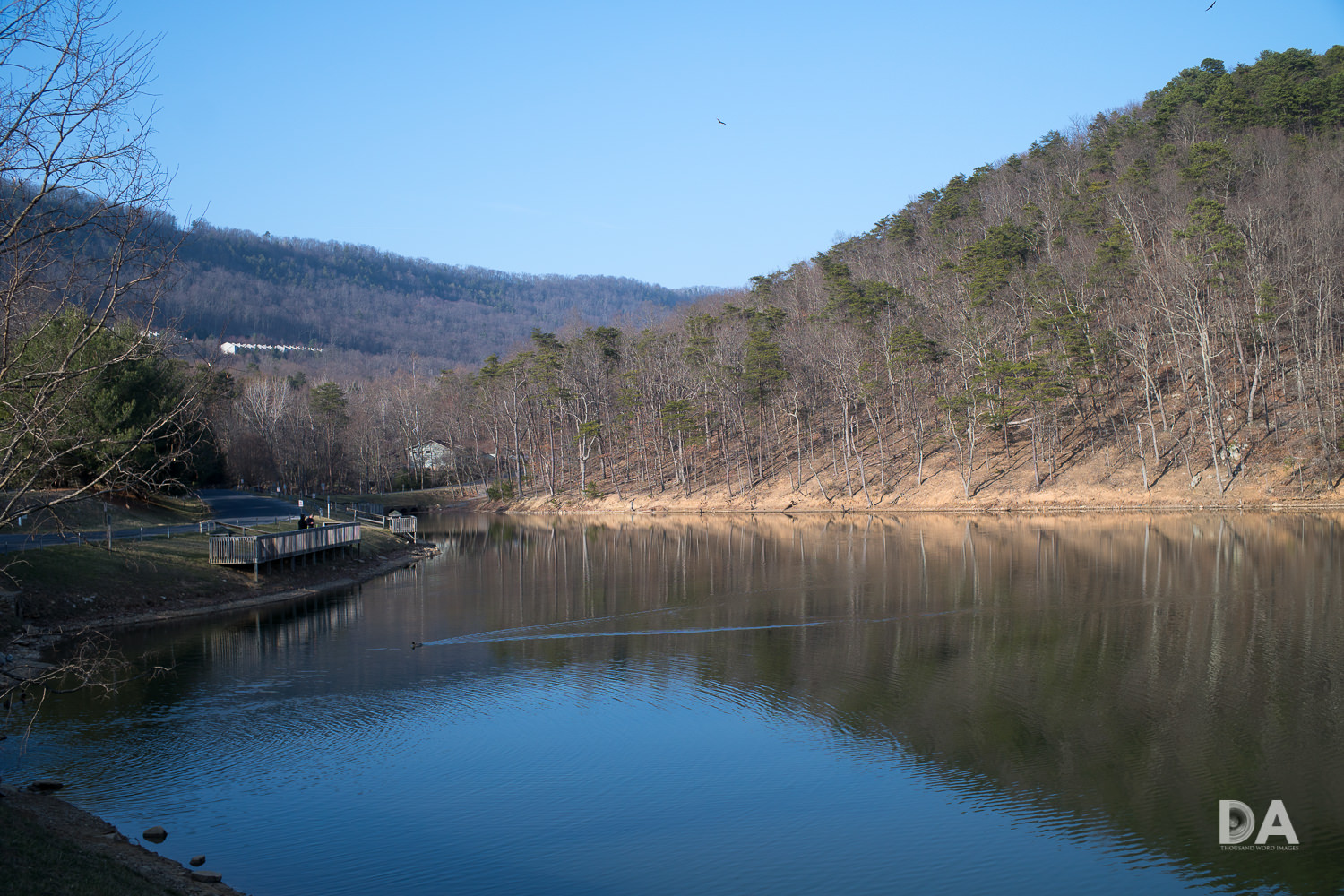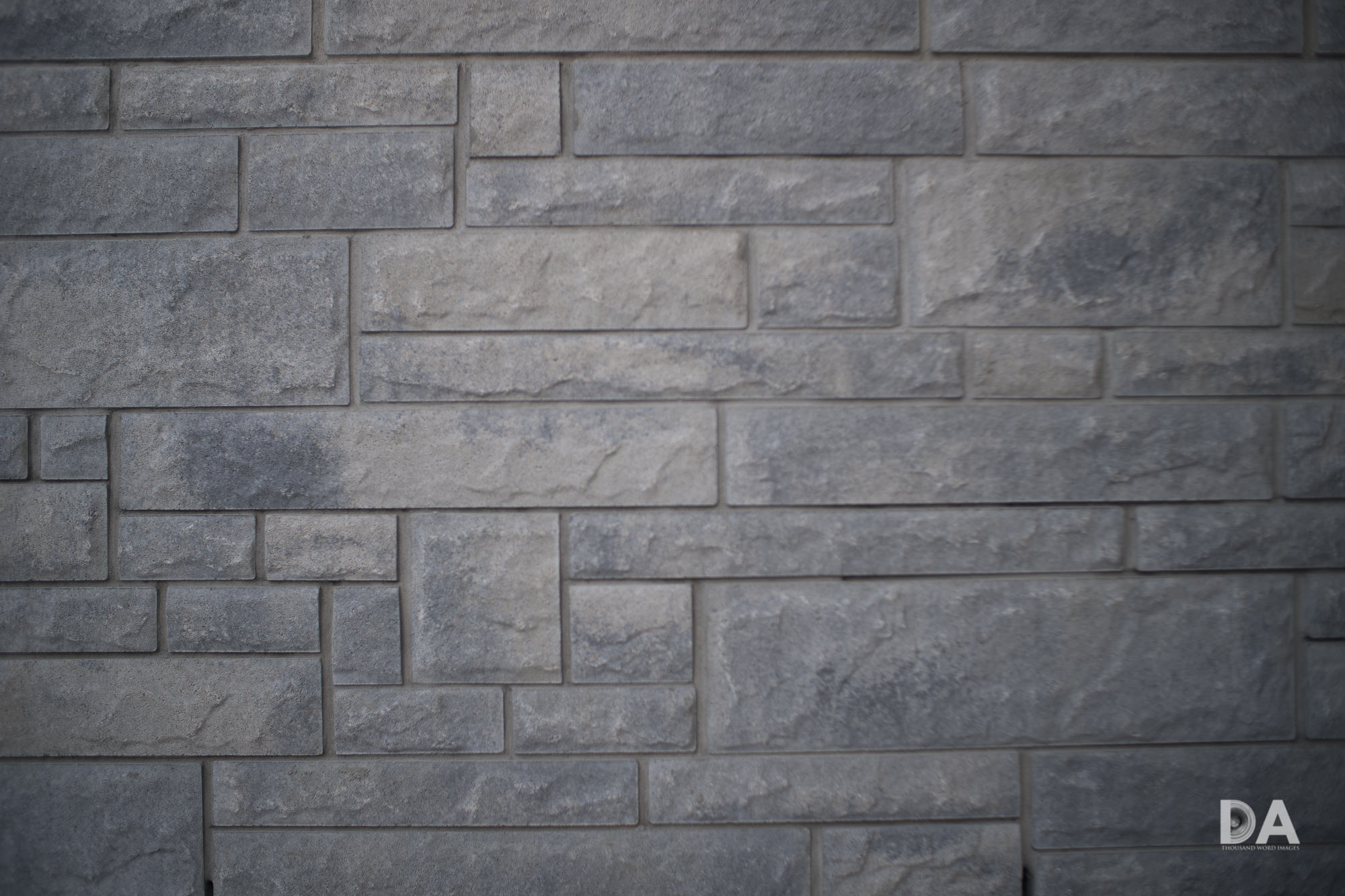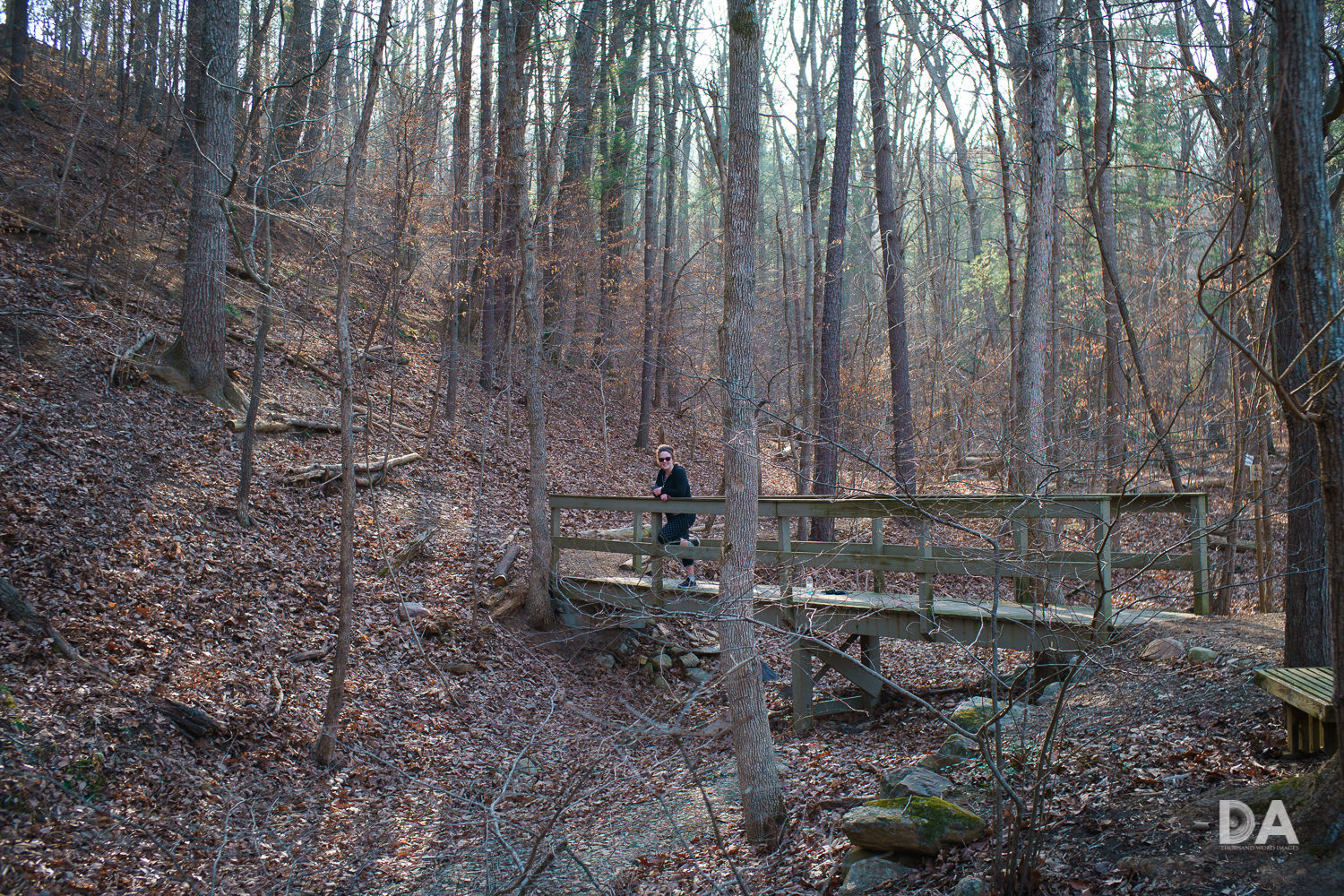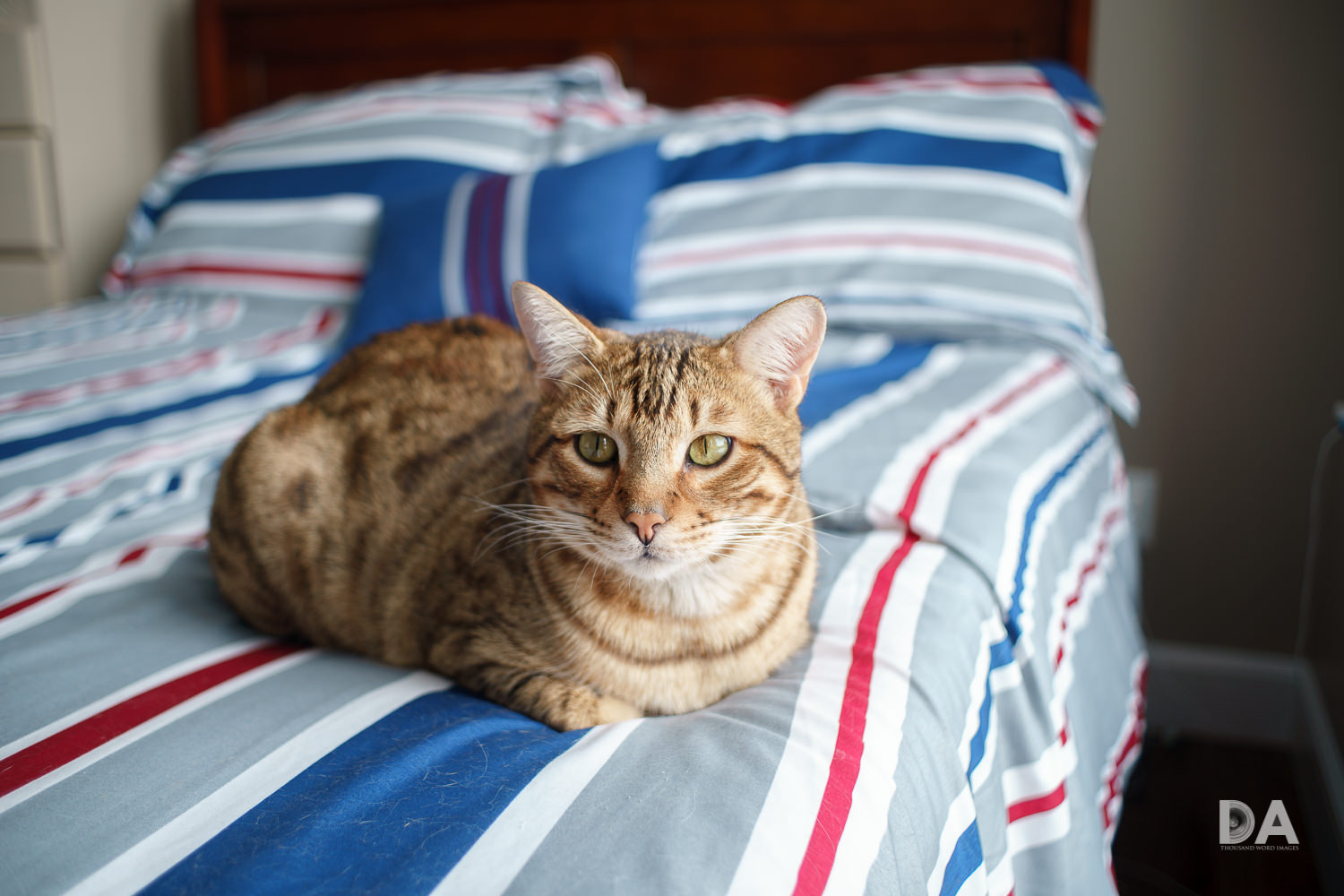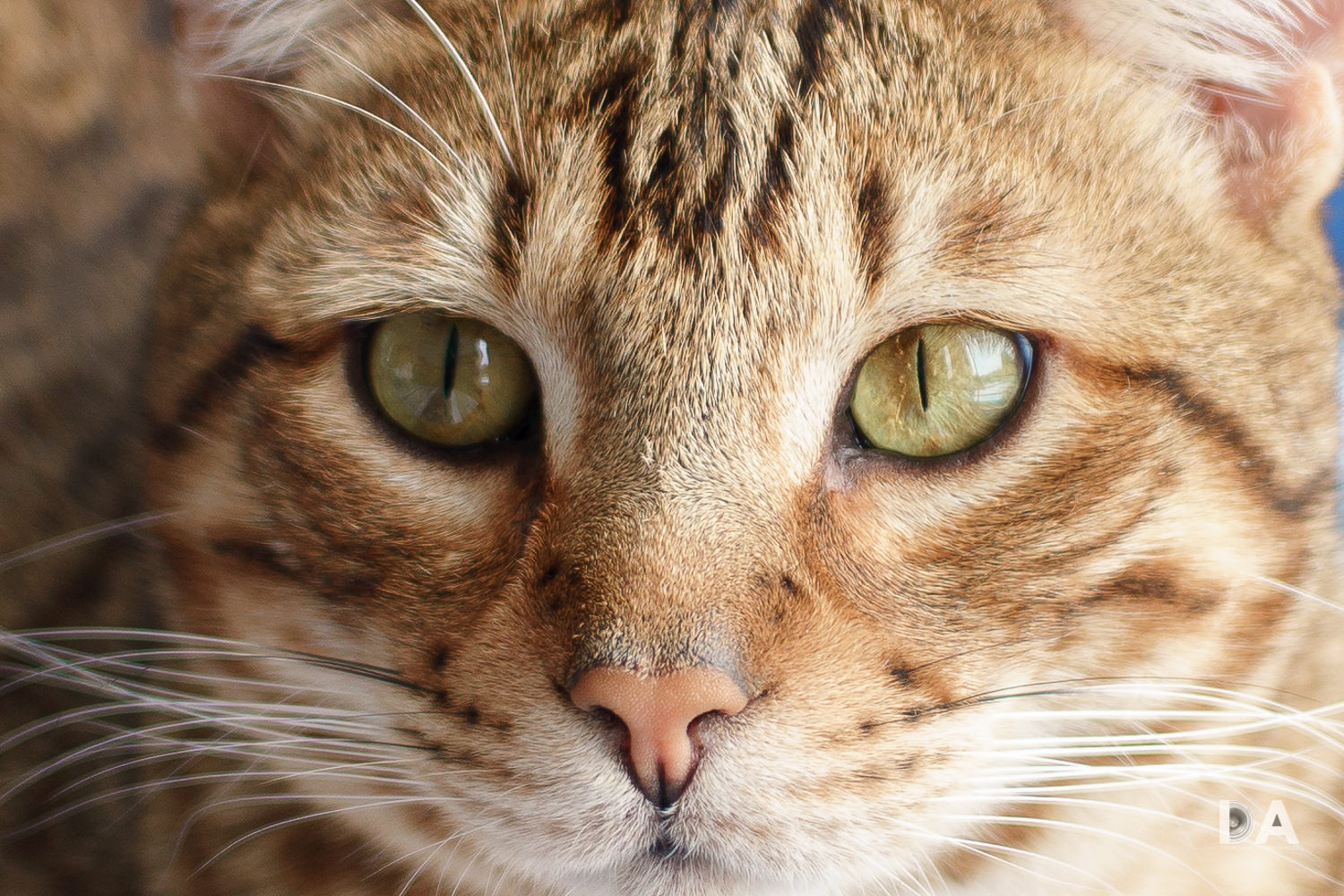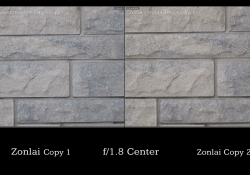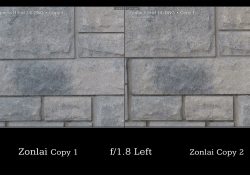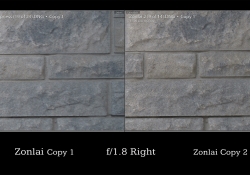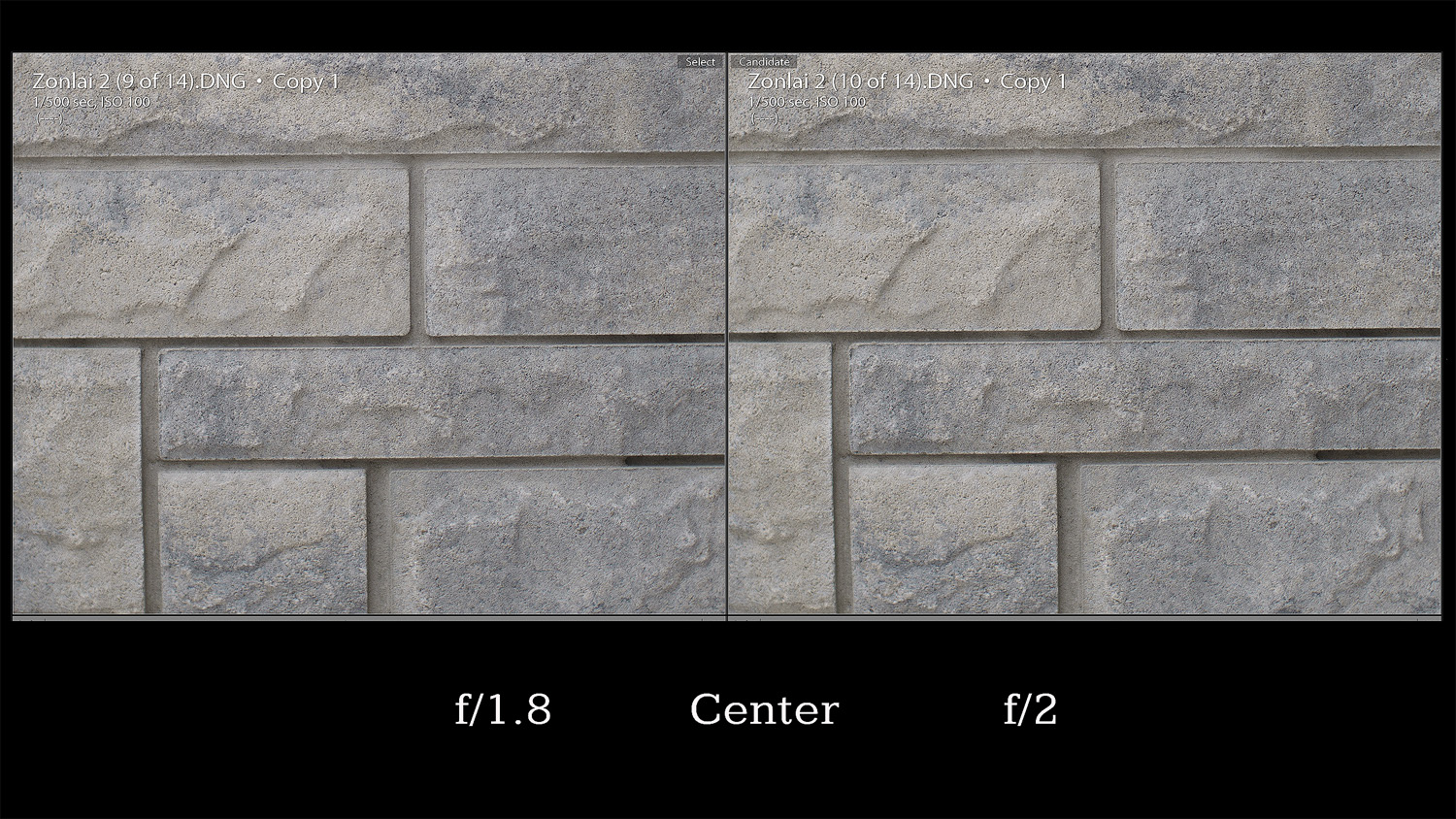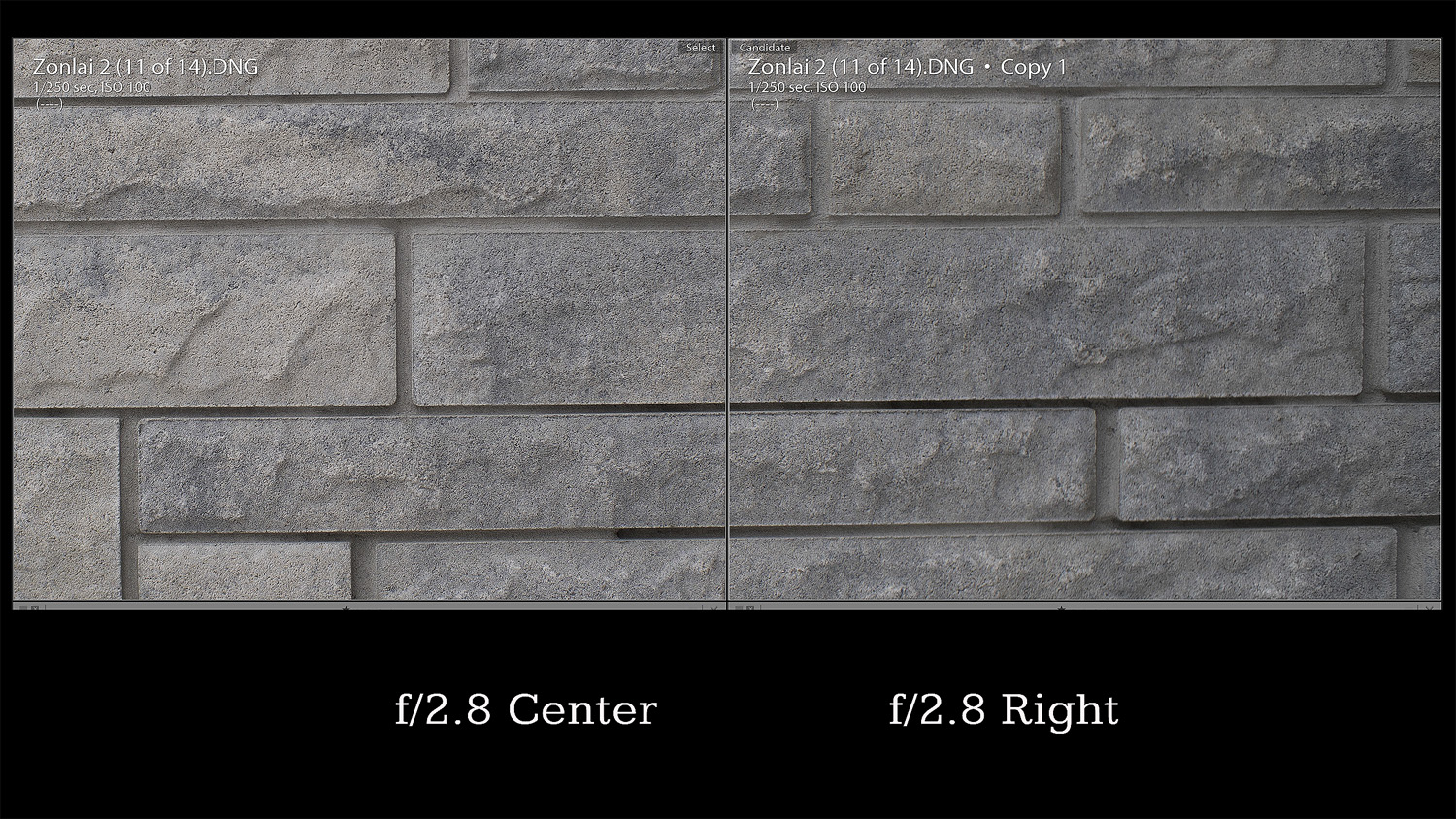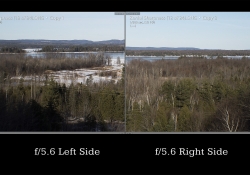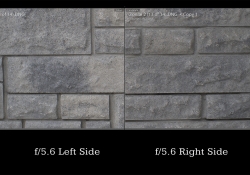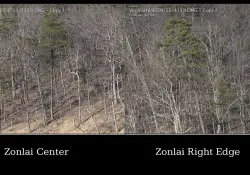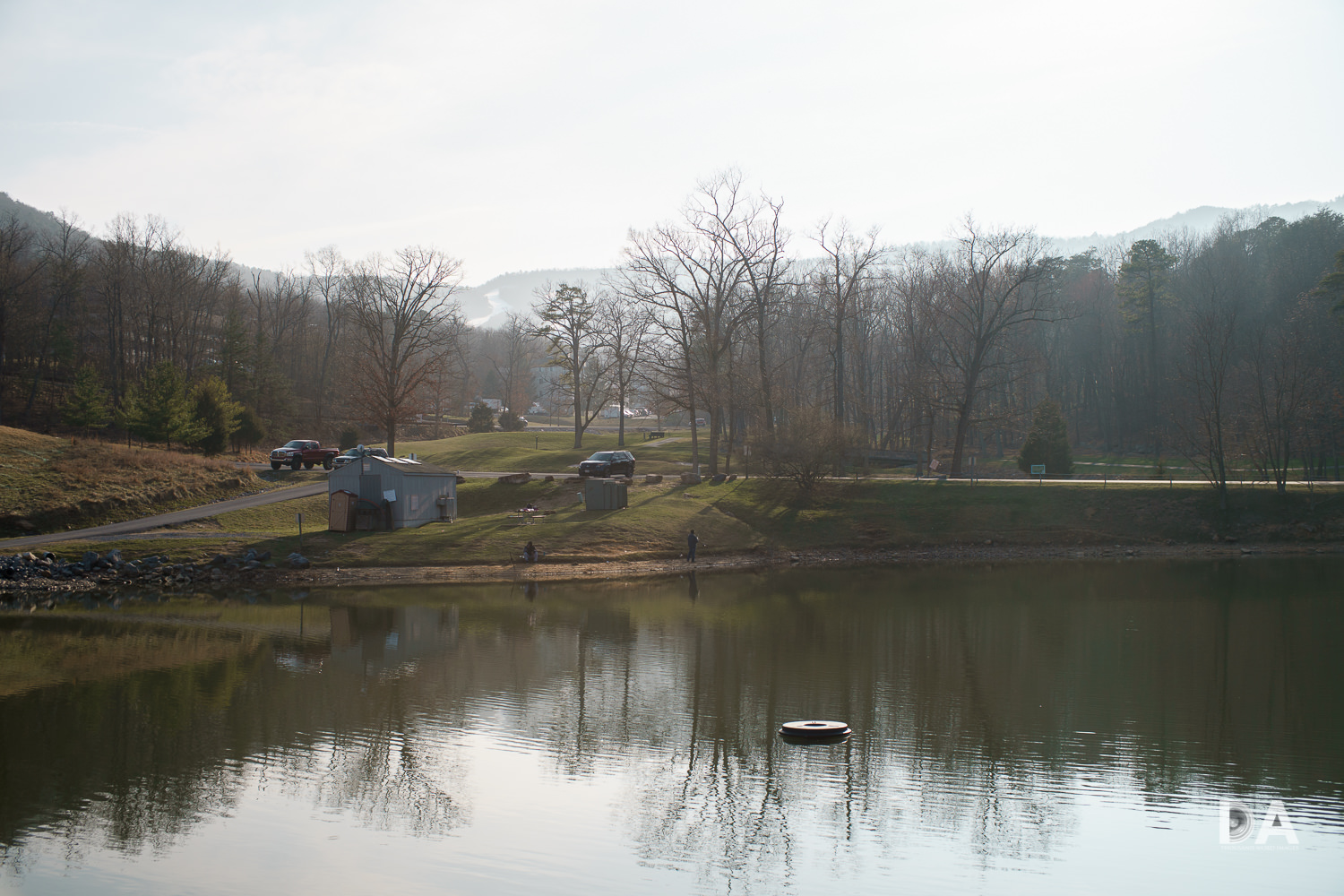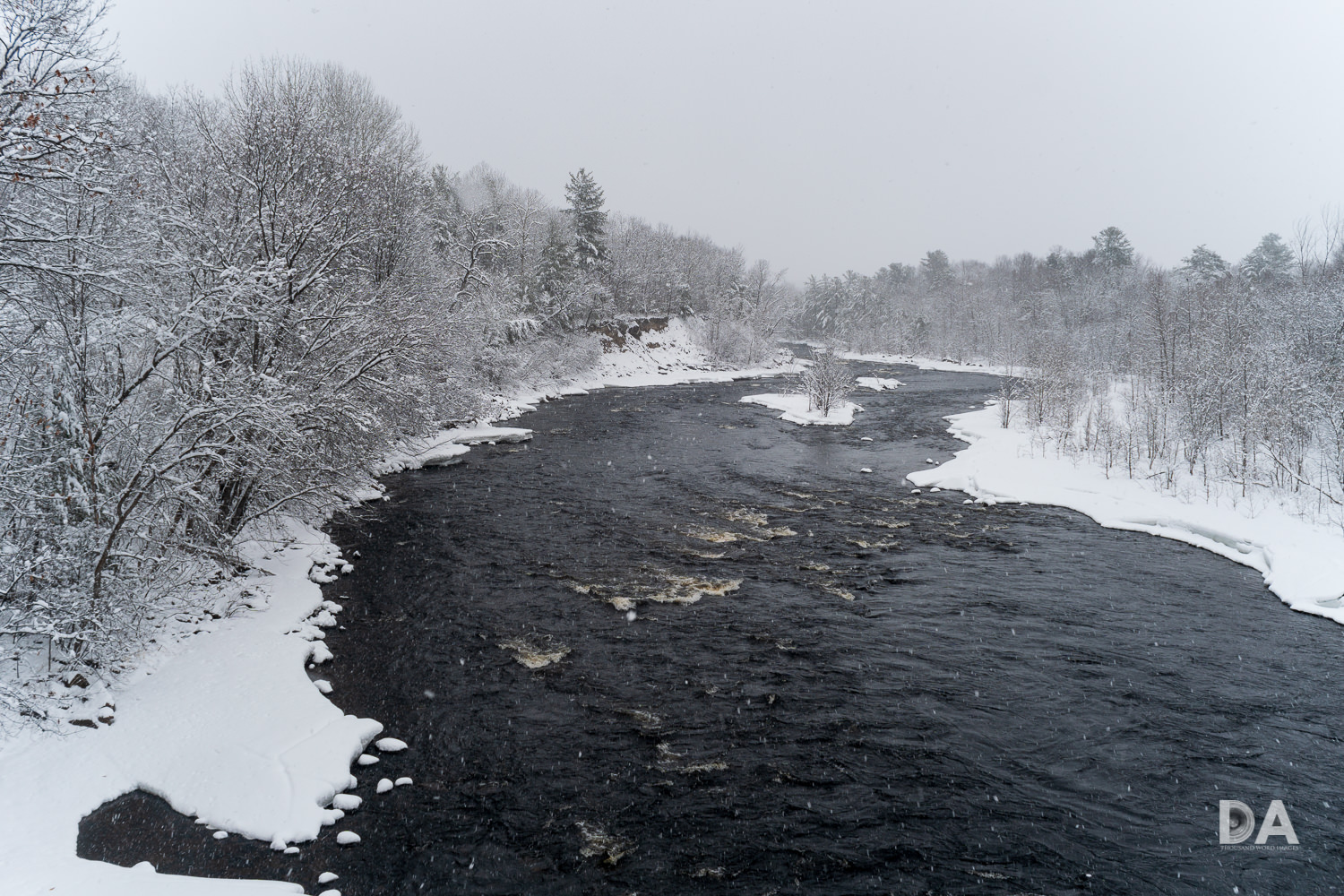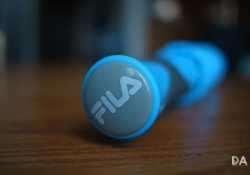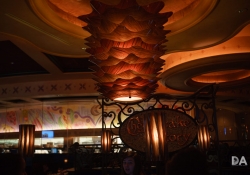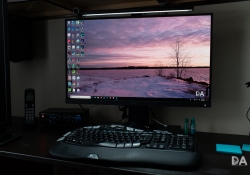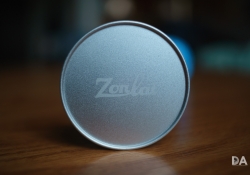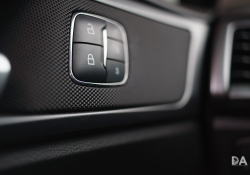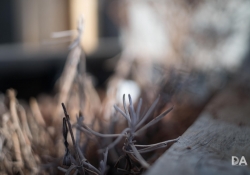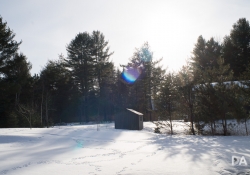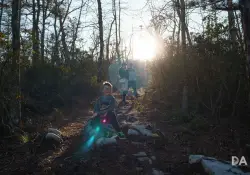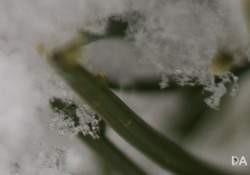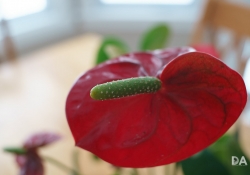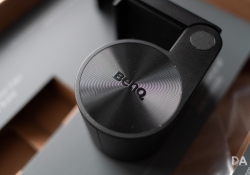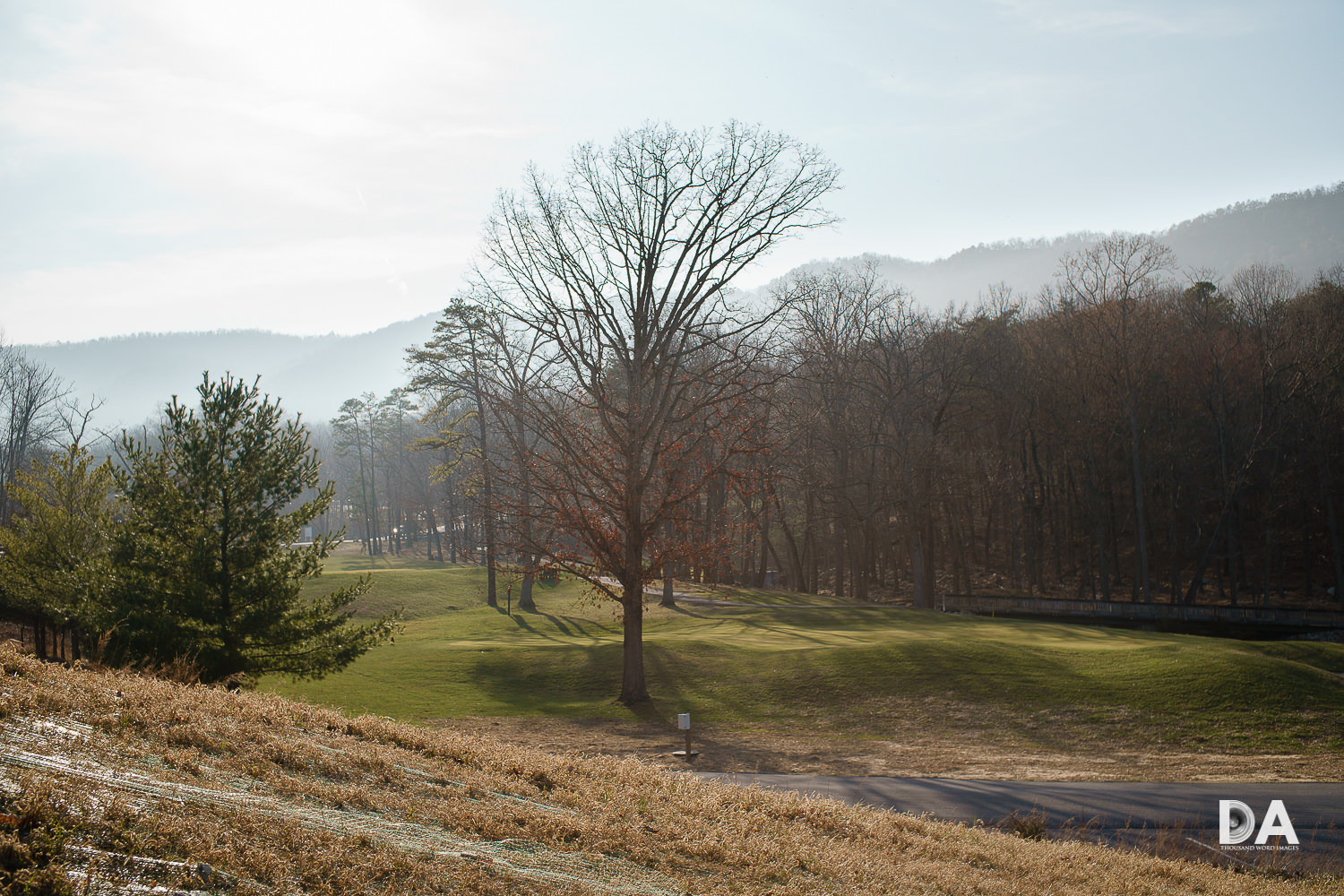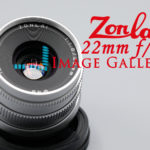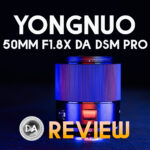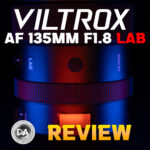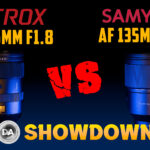A few years ago, my job was simpler. As a Canon reviewer, there were basically only four companies that made most all of the lenses: Canon, Sigma, Tamron, and Zeiss. Three Japanese companies and a German company who produces their SLR lenses in Japan. Then came along the Korean company Samyang/Rokinon who began to challenge for some market share. In the past few years, however, the lens-makers landscape has really opened up, and suddenly there were a number of new companies trying to challenge the status-quo through innovation and price. Among those are a variety of new Chinese lens-makers, including Laowa, SainSonic (Kamlan), and now, Zonlai. I’ve reviewed multiple lenses from the former companies, but this is the first Zonlai lens that I’ve ever reviewed (and frankly, ever heard of). Fortunately first impressions of the company are positive, as the Zonlai 22mm f/1.8 is a surprisingly strong little performer…particularly when you consider it’s price point of around $160 USD.
Prefer to watch your reviews? Check out my full review and image quality breakdown here:
Check me out on: My Patreon: | Google+: | Facebook: | Twitter: | Flickr: | 500px: | Sign Up for My Newsletter :
Zonlai 22mm f/1.8 Build and Handling
The Zonlai 22mm is a manual-everything lens (manual aperture and manual focus), with no electronics involved. In this sense it is much like a lot of other similar lenses I’ve reviewed from Kamlan, Laowa, Samyang/Rokinon, and more. In design, however, this lens reminds me more of rangefinder lenses and/or classic glass (like many M42 mount lenses that I’ve owned or used in the past). While the lens is available in a black finish, the company elected to send me one in a silver finish, which definitely makes it stand out from my other lenses.
I’m not yet decided as to whether or not I like/prefer this finish, as on one hand it doesn’t match the camera as well as a black lens (I’m using a Sony a6500 for this review), but at the same time it does make a certain fashion statement. Don’t worry though, if you are more interested in tradition than in making a statement, you can also get the lens in traditional black.
The finish is an anodized metal (aluminum) with some nice textures and a few surprisingly premium touches. A lot of lenses pass through my hands, and I’ve learned to spot some key things. I noted, for example, that all the barrel markings are stamped into the metal rather than painted. The tolerances everywhere on the lens are actually very tight, and there are no binding or “sticky points” in the manual focus ring. There is some very fine machining at both the front of the lens, and, in particular, at the rear of the lens, where what I see looks like something from a much more expensive lens. The lens is rear focusing, so the rear group of elements moves forward when focused towards minimum. This allows me to see a little bit into the interior of the lens, and what I see is solid machined pieces of what appears to be aluminum along with two screws on each side that hold the rear group in place. This, (along with real screw heads hold the bayonet mount in place) speaks of a nice modular design that would allow easy access to repairs down the road.
Bottom line is that this is a surprisingly premium build on such an inexpensive lens. See more about it here in this hands-on video:
Adding to this premium feel is the packaging, where the lens is presented almost like a nice watch. The packaging is much more elegant than other lenses at similar price points. This is smart, as, to me, it helps offset the bias a lot of Westerners have of Chinese products being “cheap”. In this case, there is a real difference between “cheap” and “inexpensive”. The Zonlai 28mm is inexpensive, but it is not cheap.
The Zonlai 22mm is an extremely compact little lens, measuring only 45mm in diameter and 55mm in length. As such, it is an excellent match for the mirrorless APS-C Sony E-mount cameras that it is designed for. Due to an all metal and glass construction, however, it has a bit of heft and weighs 224g (7.9oz), which is heavier than equivalent-sized lenses made of the more typical engineered plastics but still fairly light in an absolute sense. Somewhat unique is the ten-bladed aperture iris, which allows for a rounded aperture even when stopped down. The decagonal shape from the ten blades is actually most obvious at the very mild stopdown to f/2, and by f/2.8 the aperture iris is rounder and remains that way through the smallest aperture value of f/16.
Up front you have a couple of options on how to finish off the lens. It comes with a lens hood with a pinch cap, or the option of using the bare lens with a friction/suction cap that reminds me of my vintage Takumar lenses. This cap (the primary one that I’ve been using) has an inner lining of padded felt that helps ensure both a snug and smooth fit. I like it, as sometimes small pinch caps (the filter thread here is only 46mm) can be little awkward. The included lens hood is a little odd and doesn’t strike me as adding a lot of shading value, though it will offer some protection to bumps to the front element. I think the primary shading value is more from side light than from when the sun is right in the frame.
If you remove the lens hood and look at the front of the lens, you will find a classic, vintage charm that I’m personally fond of. Everything is in metals, with the black, machined front façade providing a nice visual contrast to the silver finish of my review copy. It has four descriptors to the four points of the compass, including the brand, lens designation (1:1.8/22mm), filter thread size (44mm), and serial number. The multi-hued colors reflecting off the front glass surface speaks of some type of “multi-coating” there. The filter threads are metal, of course, as there is no plastic that I could see in the construction.
The aperture ring is located on the front of the lens with nicely defined detents (clicks) at full aperture stops with one exception – there is one for f/1.8 and then a second f/2, from which the standard stops continue. There was a little issue with my review copies (I actually tested two of these lenses) at the detent at f/16 – the aperture ring didn’t quite travel far enough for a complete stop there, and I had to force the ring a little further than the natural finish point to reach f/16. Fortunately for me, that isn’t really a stop I typically use (I rarely use any lens past f/11 due to diffraction starting to diminish image quality), though your usage may vary. A viewer who has purchased the Zonlai 22mm noted a similar issue, so it wasn’t just me.
The aperture ring moves very nicely otherwise. It is ribbed in metal and easy to grip. I like the fact that the ring size is very different from the manual focus ring; it’s size and location combined with a nice spacing from the MF ring means that I’m not inadvertently grabbing it.
The manual focus ring is also really nice. It is a little over a centimeter (about a half inch) in width, nicely ribbed and easy to grip, and moves essentially perfectly. Nicely damped, very smooth, and with a great amount of focus travel (about 200 degrees). This provides a great focus experience. A big percentage of that focus travel is from minimum focus to the 1 meter mark, as the lens has a very close (15cm/6”) minimum focus distance that provides a very strong magnification figure of 0.22x or a 1:4.6 magnification ratio. This is near to 1:4 life size, which, combined with the shallow depth of field provided by the maximum aperture of f/1.8, allows one to produce some unique shots. The focus throw from 1 meter to infinity is much smaller but focus also becomes a little less critical due to increasing depth of field.
The great manual focus aids built into the Sony a6500 body that I used for review allowed me to easily get consistent focus results, though obviously manual focus typically will take more time than autofocus.
The lens also has a wider variety of hyperfocal markings than is typical, including markings at f/1.8, f/5.6, f/8, f/11, and f/16. If you are new to using manual focus lenses, study up a bit on hyperfocusing and how it can help you get quick, reliable results in those situations when you want everything in focus.
As previously noted, the rear of the lens is nicely engineered, though it lacks either electronics or any kind of weather sealing. I don’t really expect the weather sealing at this point, but the lack of electronics brings its own kind of complications.
The first of those complications is that the lack of communication to the camera body means that in camera profiles are out of the question. Even in a piece of software like Lightroom a profile won’t automatically be applied but must be manually selected…and you may need to go and find a profile for it. I developed my own correction profile that seems to clean everything up nicely (vignette and distortion).
My supporting patrons can download my profile on Patreon.
The secondary challenge with no electronics is that the lens won’t communicate any EXIF data. This means that you won’t get lens-specific information attached to the files, like focal length, lens designation, or aperture value. The latter can be a real challenge as it makes applying a profile to correct for, say, vignette, difficult because vignette is aperture specific in most cases.
One final observation on the lack of electronic communication: if you are shooting on a camera body with Sony’s IBIS (Optical Steady Shot), you will need to manually select the focal length in Steady Shot settings to tailor the IBIS to give the best performance. 22mm is not an option, so you will need to select the 21mm focal length as the closest alternative. Doing this will give you a better performance.
On a side note, I personally miss proper EXIF data as a lens reviewer. It means that I have to try to mentally remember aperture values for tests and shots when I report on the lens. As an added complication, I’m currently reviewing a couple such lenses, so I’m also struggling to remember which lens was used for a particular shot.
Complaining aside, I knew all of these things going into the review; it’s the nature of this kind of lens. There were no unpleasant surprises as I began to use the lens. If anything, my positive first impressions of the presentation, build, and handling of the lens were only enhanced by my actual use of it. This is a remarkably well made little lens at this price point, and a number of engineering details bely the budget price tag.
Zonlain 22mm Image Quality
The Zonlai 22mm has an optical formula of 8 elements in 6 groups. 22mm is not necessarily a common focal length, but with Sony’s 1.5x APS-C crop factor the focal length is a full frame equivalent 33mm; very close to a standard 35mm focal length. I doubt that I need to convince you that this is a very useful focal length; one of the very best “walk around” focal lengths. It’s good for a lot of subjects, and the close focus ability of the lens along with it’s fairly wide maximum aperture only adds to the versatility.
I’ll be honest: the Zonlai 22mm surprised me. This is a very inexpensive lens from a brand that I had never heard of prior to when the distributor of it contacted me about doing a review. I had fairly low expectations for the optical performance from the lens, but what I’ve found is a surprisingly competent lens on a lot of levels.
I’ll delve into resolution and contrast in a moment, but I first want to highlight how surprised I was by the rendering from the lens, which, frankly, I found very, very interesting. There is a certain “analog charm” that I found about the lens, where the images off it had a certain quality that I really liked. Like really liked, and not just in a budget kind of way. I review lenses for all budgets, including those that cost as much as a used car, so I didn’t expect to find that I like the rendering from the lens over a lot of much more expensive options.
Part of that “magic” is that I often found that correctly exposed images didn’t peg out (clip) on either the shadow or highlight end of the histogram. This would often create a slight “analog” look to the images that weren’t crushed in some way. You can easily dial in more contrast if desired, (often by just extending white and black levels to the edges of the histogram) but often the look of images was just pleasing as it was. What’s interesting is that while global contrast isn’t over the top, I found microcontrast from the lens actually quite good. If you zoom into the details of the images there is good microcontrast and thus fine textures are rendered quite well. At wide apertures that effect is more concentrated in the center third of the frame, then two-thirds, but when stopped down, the lens actually becomes a surprisingly competent landscape lens. I was surprised by how much detail was rendered (even at a pixel level) at landscape distances across the whole image frame at apertures like f/5.6 and f/8.
I keep zooming into it on a 1:1 pixel level, and I’m really, really surprised by how much detail is there.
I did discover a fly in the ointment when I formally tested the lens, however, as I noted that the left side was significantly softer than the right. I tried focusing directly on that left side and discovered that I could get much better sharpness…though now neither the center nor the right were in focus at all. This seemed to indicate either a decentered element or perhaps a tilted element.
I let Zonlai know, and they sent me a second copy to test. I found that the second copy performed slightly better, but exhibited roughly similar behavior. They may have a manufacturing/assembly “kinks” to work out.
At wider apertures edge sharpness matters less just because of the type of ways we tend to use lenses like this. I didn’t actually note the centering issue until I formally tested the lens, though I did see a few images that I thought were a little softer than expected on the left. Other images, like this one, seem strong across the frame.
Despite the centering issue, I found that the lens was effective at all focus distances, which extends the value of such a lens to me, as it can be hybrid between the kinds of images that you take at wide apertures and the kinds of images that you take at narrow apertures (landscapes, etc…) I find that with many budget primes there is a fairly narrow scope of what kind of images they are good for. They might be good at portrait distances, for example, but optical weaknesses are exposed at infinity distances, where they struggle to resolve the fine details of landscape images. That wasn’t the case here, as the Zonlai seemed to perform equally well from minimum focus distances to infinity.
Resolution
Chromatic aberrations are fantastically well controlled, with neither lateral nor longitudinal aberrations showing up in any meaningful way for field use. The byproduct of this is that the lens has very strong microcontrast even at wide apertures…particularly in the center of the frame. Look at the fine textures on the second (cropped) image of the cat:
I found that I had fairly consistent results between portrait distances and infinity distances. As previously noted, the lens works well at both distances, and I first brought up the low chromatic aberrations as this gives the reason why. Lenses with a weakness for chromatic aberrations often don’t perform very well at infinity, as the higher contrast conditions exaggerate the veiling produced by chromatic aberrations. The Zonlai 22mm has very low chromatic aberrations, and, as a result, it resolves details at infinity distances quite well.
First, however, let’s break down the portrait distance result. There is some vignette at wider apertures, and the primary difference between f/1.8 and f/2 is a light lifting of the vignette (that might help if you are shooting in conditions where having vignette is an issue). Wide open, I found that a value of +58 in Lightroom’s manual Vignette slider and selecting a midpoint of 31 cleared up the vignette nicely, and a value of +7 helped straighten out the mild barrel distortion that is present. There is a very, very slight amount of “mustache” distortion that will only be noticed when shooting (as I am for this test) a subject with very precise geometric lines. Note: my Patrons can visit Patreon and get my custom profile for the lens for free as a ‘thank you’ for your support.
The center sharpness and contrast at f/1.8 is pretty near excellent, but the edges lag behind a fair bit. As previously noted, there is a centering issue with both copies of the lens I tested, with the second copy performing a little better. Here’s a comparison of the two copies from across the frame.
Stopping down to f/2 does very little. On multiple occasions I discovered that the lens exposed identically (AV mode chose the same shutter speed for both), though the f/2 result actually looks a little brighter due to some of the vignette retreating. I found a minor uptick in resolution and contrast in the center of the frame, though only enough to be visible when looking close and having the two side by side. The same is true of the edges of the frame.
Stopping down to f/2.8 shows a significant lifting of the vignette. Center sharpness and contrast remains the same (which is to say, excellent), but there is a definite improvement in edge sharpness, which is now enter good territory (at least on the right).
Stopping on down to f/4 shows an extremely small further improvement on vignette, with center sharpness remaining excellent (but mostly unchanged) while the edges now reach very good territory (though the left still lags).
At f/5.6 I actually see a very mild improvement in the center of the frame, and now the corner performance is also excellent on the right, though the left side lags behind at either portrait distance or infinity.
If Zonlai could straighten out the decentering issue this could be a truly excellent compact landscape lens. The excellent microcontrast and low CA from the lens enables it to do a great job of resolving fine details and textures. There were actually a number of my real world images where I could only detect the centering issue by looking for it, and others where I didn’t feel I could detect it at all.
If your shooting style mostly involves the center 2/3rds of the frame, however, the results are really pretty excellent at any aperture.
Color, Bokeh, and Flare Resistance
Color rendition is excellent, and, while it can be hard to quantify color rendering, I will say this: I was concurrently reviewing two Zeiss Batis lenses (2.8/18mm and 2/25mm) on the Sony a7R3. On some hikes or excursions, I had one of the Batis lenses on the a7R3 and the Zonlai 22mm on my a6500. There were actually times when I opened images and thought I was looking at a Batis image until I noticed that the there was no Metadata for the lens (indicating the Zonlai and its lack of electronics). Considering that these lenses’ cost more than 10x more, this is impressive.
Bokeh rendering is a bit of a mixed bag. The lens affords you the ability to focus down very closely, and the resulting 0.22x + wide maximum aperture of f/1.8 magnification means in some applications you can get close to your subject and throw a background strongly out of focus. The background blur in these situations is actually very nice, as some of these very close focus images show.
In other circumstances, however, the bokeh can be a little busier, with the lens grabbing some hard edges and not blurring them completely. The “transition zone” between focus and defocus is particularly prone to a little busyness if there are hard edges in that area. You can see that in both this close focus example and in the lower left side of this casual portrait.
You will also see some deformation of geometry along the edges of the frame (cat eye shapes), but this is fairly typical. Don’t expect strongly defocused backgrounds when you start moving away from your subject, however, as this isn’t a particularly long focal length. Bottom line is that bokeh quality is going to depend on the scene and your particular tastes. In some instances it looks quite lovely, while in other scenes it looks somewhat busy.
The lens is definitely not flare resistant! While veiling isn’t a terrible issue (loss of contrast), but there is a lot of prismatic ghosting. There is some prismatic colors near the epicenter of the sun, which is faint at wide apertures (and somewhat artistic), but more pronounced with the lens stopped down. There is also some ghosting artifacts further down the direction of the sun’s rays, and, once again, this becomes more pronounced as you stop the lens down. It isn’t necessarily destructive to the image, but you do have to be careful where you place the sun and these ghosting effects in the frame. If the sun is right out of the frame the lens will veil somewhat, and that’s where the included lens hood (though shallow) can make a difference. When stopped down to smaller apertures, the lens produces an attractive sunburst.
Another positive is that the lens performs well at close focus distances, as it continues to resolve well and has good microcontrast of textures due to low CA. It made for a nice little budget product shot lens for this reason.
This is a lens that I didn’t hesitate to use wide open, and the results are generally excellent due to the high center sharpness, great contrast, excellent color rendition, and low CA. If it weren’t for the centering issue that I saw on both copies of the lens I tested, I would categorize the optical performance as excellent. You can see a greater variety of images from the lens at the Image Galleries page here.
Zonlai 2mm f/1.8 Video Thoughts
The Zonlai 22mm is an attractive option for shooting video. I’ve used it for a number of my video segments on my YouTube channel, and have been very happy with the sharp, nicely colored 4K footage from my Sony a6500 and the lens. The lens handles very well, so will be a nice choice for video shooters who will either use some focus mechanism (something like the FocusShifter manual mechanism I reviewed) or who like to set focus and leave it. It’s very lightweight, so it will be a nice option on a gimbal system as well. I suspect that film makers on a budget will really enjoy this lens for a lot of reason. It can focus down closely (useful), has good color and contrast (ditto), and has excellent center sharpness at any aperture (obviously very important). Many film makers prefer manual focus lenses, and this is a very inexpensive way to get great manual focus and excellent image quality.
Conclusion
It is great to see some excellent budget options emerge from some new lensmakers. There are always growing pains for new companies – as evidenced by a few of the quirks I saw in the production of the lens(es), but where I’m encouraged is in how good the optics are on the lens. I review lenses from mature lens makers that have more optical flaws than the Zonlai 22mm f/1.8, so I have a lot of hope that once Zonlai gets their manufacturing line ironed out they will be able to produce better and better budget alternatives for Sony, Fuji, Canon M, and M43 shooters. I’m certainly interested in what they will offer in the future. The Zonlai 22mm is built from good materials, has a beautiful focus ring, and overall handles very nicely. The images I’ve been able to get out of it seem more premium than the inexpensive price suggests. It’s a nice focal length for both still and video work, and the excellent performance at close focus distances further extends the usefulness for me. If you are on a tight budget, I would consider this lens. Manual focus isn’t for everyone, but mirrorless bodies take a lot of the sting out of it, and this lens will enable much better results than what a kit lens can offer. The Samyang/Rokinon 21mm f/1.4 is a nice alternative, but expect to pay at least twice as much.
Pros:
- Nicely built lens that handles well
- Excellent color rendition
- Extremely low levels of CA
- Good minimum focus distance and magnification
- Good sharpness
- Excellent manual focus ring with good throw and damping
- Inexpensive price = good price to performance ratio
Cons:
- Some manufacturing quirks in aperture ring and decentering issue
- Some ghosting when sun in the frame
- Bokeh can get a little busy in the transition zone
Purchase the Zonlai 22mm f/1.8: Amazon | Amazon Canada | Amazon UK | Ebay | Sainsonic Webstore (Global)
Sony a6500: B&H Photo | Amazon | Amazon.ca | Amazon UK | Ebay
Peak Design Leash Strap: B&H Photo | Amazon | Amazon Canada | Amazon UK
Adobe Photoshop Creative Cloud 1-Year Subscription
Alien Skin Exposure X2 (Use Code “dustinabbott” to get 10% anything and everything)
Purchasing your gear through B&H and these links helps fund this website and keeps the articles coming. You can also make a donation here if you would like. Visit my Amazon page for some of my gear of choice! Thank you for your support.
Great News! I can now offer a 5% discount on all purchases at Amplis Foto, Canada’s Leading Photographic Supplier. Please enter discount code: AMPLIS52018DA in your cart. It is good for everything in your cart, and is stackable with other coupons, too! It will take 5% off your entire order! Proceeds go towards keeping this site going and providing you with new reviews!
Check me out on:
My Patreon: | Google+: | Facebook: | Twitter: | Flickr: | 500px: | Sign Up for My Newsletter :


Keywords: Zonlai 22mm 1.8, Zonlai 22mm f/1.8, Zonlai, 22mm, f/1.8, 1.8, Zonlai 22mm f/1.8 Review, Zonlai 22 1.8 Review, 1.8/22, Dustin Abbott, Lens, Review, Image Quality, Video Test, 4K, Sample Images, Real World, Manual Focus, Bokeh, CA, Sharpness, Resolution, Distortion


